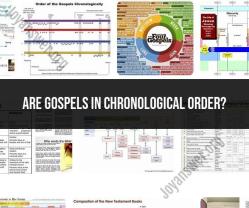Can you compare praying to meditation?
Certainly, prayer and meditation are two practices that are often used for spiritual or contemplative purposes, and they share some similarities while also having distinct differences. Here's a comparison of prayer and meditation:
Similarities:
Inner Focus: Both prayer and meditation involve turning one's attention inward. They encourage self-reflection, introspection, and a deepening of one's inner awareness.
Spiritual or Transcendent Goals: Both practices are often pursued with the aim of connecting with a higher power, seeking inner peace, spiritual growth, or enlightenment. They can provide a sense of purpose and meaning in life.
Mind-Body Connection: Both prayer and meditation acknowledge the interconnection between the mind and body. They recognize that mental and emotional well-being can have physical effects and vice versa.
Stress Reduction: Both practices have been shown to have stress-reduction benefits. They can promote relaxation, reduce anxiety, and help manage the effects of daily stressors.
Cultural and Religious Variations: Both prayer and meditation have variations and practices specific to different cultures, religions, and belief systems. They can be adapted to fit individual preferences and spiritual backgrounds.
Differences:
Intent and Focus:
- Prayer: In prayer, individuals typically communicate with a higher power, deity, or divine being. It often involves making requests, expressing gratitude, seeking guidance, or simply conversing with a divine presence.
- Meditation: Meditation typically focuses on quieting the mind, observing thoughts without attachment, and achieving a state of mindfulness or presence. It often seeks to transcend personal identity and thoughts.
Verbal vs. Silent:
- Prayer: Prayers are often spoken or recited aloud, though they can also be silent or internal. Verbalization is common, especially in religious settings.
- Meditation: Meditation is usually a silent practice, with the emphasis on inner stillness and quieting mental chatter. Mantras or chants may be used but are not required.
Structure and Ritual:
- Prayer: Prayers often have specific formats, rituals, and prescribed words or texts, especially within religious traditions. There may be established prayer times and postures.
- Meditation: Meditation is often less structured and can vary widely in technique and approach. It may involve sitting, lying down, or moving mindfully, depending on the method.
Religious Context:
- Prayer: Prayer is a central religious practice in many faiths, including Christianity, Islam, Judaism, and others. It is often an integral part of religious services and ceremonies.
- Meditation: While meditation is practiced within some religious traditions (e.g., Buddhism, Hinduism), it is also widely practiced in secular and non-religious contexts as a tool for mental and emotional well-being.
Goal of Thought:
- Prayer: In prayer, thoughts and words are directed toward a deity or higher power. The goal may involve seeking divine intervention, guidance, or a closer relationship with the divine.
- Meditation: In meditation, the goal is often to observe thoughts without attachment and attain a state of mindfulness, inner peace, or self-realization.
While prayer and meditation have distinct differences, they can also complement each other. Some individuals incorporate elements of both practices into their spiritual or contemplative routines, choosing what resonates most with their beliefs and personal goals. Ultimately, the choice between prayer and meditation is a highly personal one influenced by individual preferences, spiritual beliefs, and cultural backgrounds.
Prayer and meditation are two spiritual practices that have been used by people for centuries to connect with something larger than themselves. While they have some similarities, there are also some key differences between the two.
Prayer is a form of communication with a higher power, such as God or Allah. It can be done individually or in a group, and it can be spoken aloud or silently. Prayer can be used to express gratitude, ask for forgiveness, or seek guidance.
Meditation is a practice of focusing the mind on the present moment. It can be done in a variety of ways, but it typically involves sitting quietly and focusing on one's breath or a mantra. Meditation can be used to reduce stress, improve concentration, and develop self-awareness.
Comparative Analysis of Spiritual Practices
One of the key differences between prayer and meditation is the focus. Prayer is focused on connecting with a higher power, while meditation is focused on connecting with oneself.
Another key difference is the role of language. Prayer often involves speaking or thinking in words, while meditation typically involves focusing on silence and stillness.
Finally, prayer and meditation can be done in different ways. Prayer can be done individually or in a group, while meditation is typically done individually.
Finding Inner Peace: Exploring the Differences Between Praying and Meditating
Both prayer and meditation can be used to find inner peace. Prayer can provide a sense of comfort and connection, while meditation can help to quiet the mind and reduce stress.
Which practice is right for you will depend on your personal preferences and beliefs. If you are looking for a way to connect with a higher power, then prayer may be the best option for you. If you are looking for a way to focus on the present moment and reduce stress, then meditation may be the best option for you.
The Mind-Body Connection: Prayer and Meditation in Perspective
Both prayer and meditation can have a positive impact on the mind and body. Prayer can reduce stress, anxiety, and depression. Meditation can also reduce stress, improve sleep, and boost the immune system.
In addition, both prayer and meditation can help to improve focus and concentration. This can be beneficial in all areas of life, including work, school, and relationships.
Conclusion
Prayer and meditation are two powerful spiritual practices that can have a positive impact on the mind, body, and spirit. Which practice is right for you will depend on your personal preferences and beliefs. If you are new to these practices, there are many resources available to help you get started.













